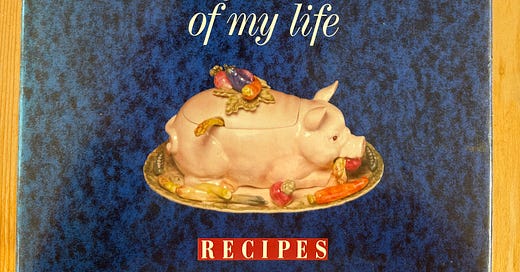The Unforgettable Dishes of my Life
Egon Ronay ... another immigrant who improved life in Britain.
Egon Ronay wrote this introduction in May 1989:
Not only do I love eating and cooking, but, above all, I love talking about food and wine. That is why I find most cookery books somewhat abstract. Recipes on their own, without a sense of occasion, people, atmosphere or gastronomic background, are in a vacuum comparable to sex without love: while it certainly has its points, it is not the same. The single-minded concentration on the clinical, stereotyped, dry instructions of recipes, without a thought for their joyful purpose, is a barren exercise. That is why Elizabeth David’s books in this country and M.F.K. Fisher’s in America stand out so much.
I hope you enjoy my ramblings and reading about cooks and cookbooks….
Subscribe to keep in touch, ideally, become a paid subscriber to read the recipes and my archive - it’s all for a charity too - anthony.nolan.org
Restaurateur, journalist and business man he is mostly remembered for publishing his guide books but I treasure this book - a memoir with great recipes that tells a story of Europe in the twentieth century.
His grandfather opened a 120-room hotel in Northern Hungary in 1910 and his father expanded the business with five prestigious restaurants in Budapest between the wars, including the Hangli which could seat 850.
An only son, no expense was spared on his education. Summers in England helped his fluency with the language and he studied law but never practiced, joining the family business. He gives the recipe for Reveller’s Soup and describes how, prewar, it was served at balls to revive the dancers, long after midnight so dancing would continue until 3am. The social mores of the old Austro-Hungarian Empire still held sway. The recipe for Sautéd Cottage Pasta from an old brasserie is accompanied by a tale of an insult to a friend that resulted in a duel fought with ancient pistols. No blood was spilled and both combatants shared beers and a hearty breakfast.
The Hangli was one of the garden restaurants where guests could dine under shady trees not a hundred yards from the Danube, perhaps choosing the seasonal speciality of May Duckling served with cucumber salad (recipe below for paid subscribers). Situated on Dunakorzo, the fashionable promenade, it became more famous still after the Prince of Wales later, briefly, Edward VIII, shot out the gas lights at dawn from his balcony at the Ritz. (For more details of this truly ghastly character do read Traitor King by Andrew Lownie … but I digress)
Some of his favourite recipes remind me of the wonderful food I ate in Transylvania a few years ago. He and his friends would cross the Buda to eat in homely, modest places serving Transylvanian Choucroute, Slushy Cabbage, Stuffed Cabbage and he refers to many other dishes, asserting:
Transylvania, after France and China, produced one of the world’s three greatest cuisines. Peacefully cohabiting Hungarians, Saxons, Jews, Wallachians and Armenians were the ingredients of this thousand-year-old, liberal melting pot, which was also an age-old caravan route. A stunningly varied, sumptuous cooking resulted, most herb-conscious and blissfully innocent of dietary reticence, a gastronomic bridge between East and West.
Hungary and Britain were at war by December 1941. The Siege of Budapest in 1945 was one of the bloodiest of the war.
"there were bodies everywhere ... they were frozen. Also, there were dead horses lying in the street, and some people managed to cut meat from them to eat."
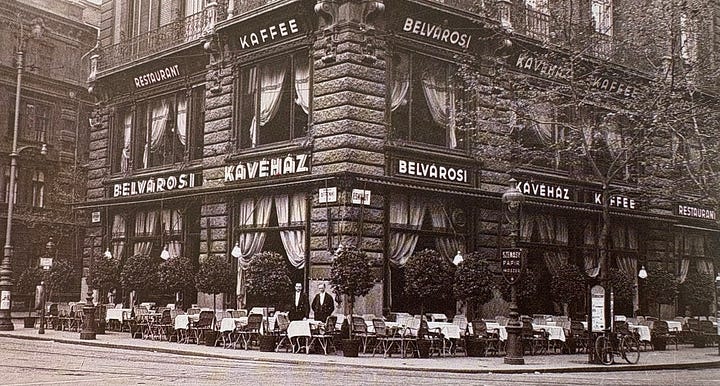
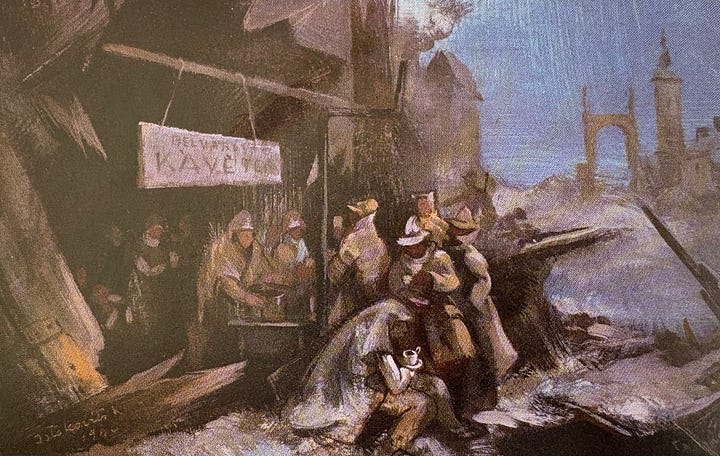
This restaurant of his family could seat 750 in 1940. The contemporary painting by Kálman Istókovits shows it ‘reopened’ in 1945.
He gives a recipe for Aligot with a reminiscence of how, after the siege in January 1945, they emerged from the cellar. It was minus 20c but he managed to feed twelve members of his family mashed potatoes with some cheese sprinkled on it.
His recipe for Lentil Purée tells a story of how he was commissioned to provide and serve banquets for the newly installed President of the Republic and his Russian guests including Gromyko and Stalin Jr. There was no problem as the Russians could requisition meat but the rest of the population were subsisting on potatoes, beans and lentils.
I am currently reading Wifedom, Mrs Orwell’s Invisible Life by Anna Funder. (Yes, it is not just cookbooks that excite my curiosity!). I am interested to note that the book celebrates Transylvanian food favoured by his mother and there are many dishes cooked by his second wife - viz Barbara’s Couscous, Barbara’s Irish Stew, Barbara’s Lamb Curry.
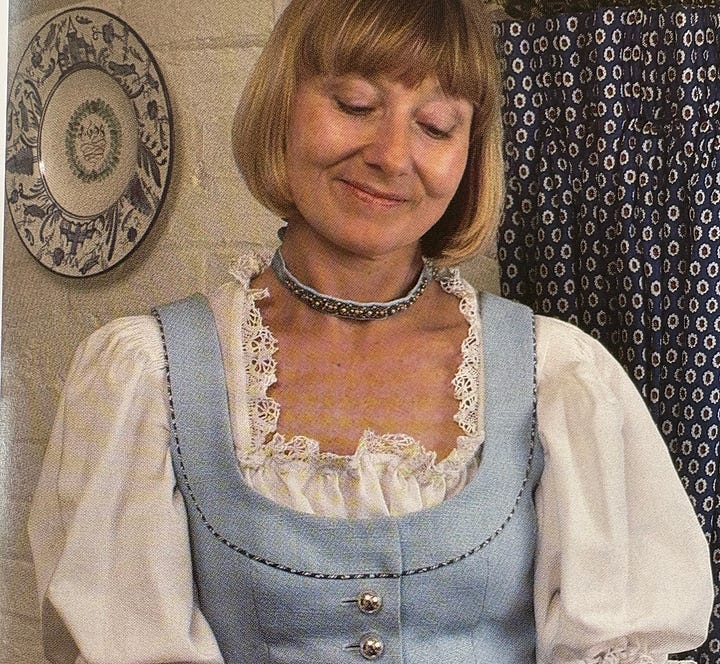
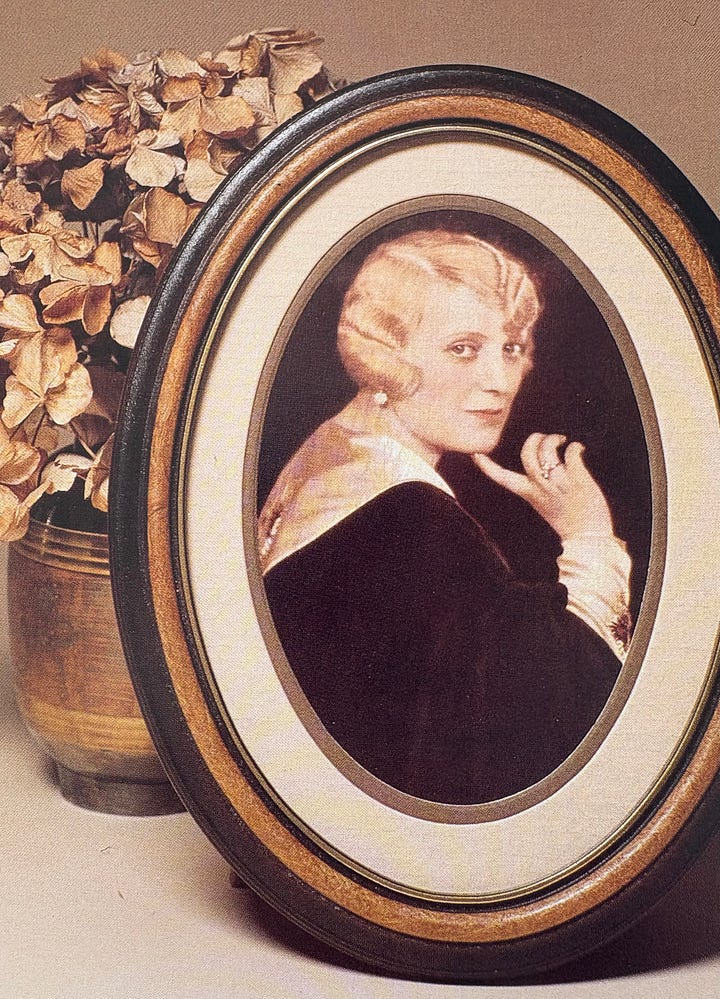
However, he was first married at 20 and the book makes no reference whatsoever to this wife or his two daughters who were born during the war. There are intriguing clues to a darker story. Egon’s family were Jewish but he was educated by a Catholic order. He seems to have been reticent about his Jewish antecedents. Edith Rudolph was the daughter of an aristocratic Catholic family who opposed their marriage, boycotted the wedding and cut off all contact. Accounts of his service during the war seem inconsistent, perhaps he did desert, but clearly the family would have needed to go into hiding once the Nazis took over in March 1944. The Hangli was closed down.
By December 1944, Budapest was encircled and besieged by Soviet forces. I read that an estimated 38,000 civilians perished during the months of the siege, about 13,000 from military action and 25,000 from starvation, disease and other causes. Of this number 15,000 were killed in mass executions of Jews by the far right Hungarian Arrow Cross Party. Lootings and mass rape were carried out once the Soviets finally took over.
Ronay arrived in London in 1946, probably with forged papers …………
His wife and daughters were able to follow. Edina Ronay, born 1943 may be more famous for her fashion brand than her acting career and her sister Esther who died recently made a career in film and championing women’s rights.
Paul Levy ( who does not mince his words ) wrote this obituary in the Independent in 1999 and ventured to try to unravel the truth about Egon’s war service in Hungary, speculating about why he might have been so shy about revealing his true date of birth.
Ronay had succeeded in becoming a brand, and for people who were a certain age in the 1970s, his name was a talisman. In later years Ronay righteously attacked those who abused their monopoly position in catering for the public, such as motorway cafes, airlines and hospitals. As anyone who has recently been forced to have a meal in any of these knows, he did not achieve much beyond gaining a glimmer or two of the limelight for himself. …….. Was he a force for gastronomic good? Did he actually improve anything beside his own bank balance? Probably not. But this strange, sometimes impressive Hungarian bundle of contradictions will make a small, but diverting footnote to the history of gourmandise.
I plan to write some more about Ronay’s life and his commentary on the post-war dining scene in Britain so do subscribe to follow more about his story.
You need to be a paid subscriber to get the recipes …. so go on, treat yourself and also do some good!
All income from my subscribers is passed to a charity and in 2025 that is anthony.nolan.org
And if you have read this far, why not click if you liked it and/or leave a comment ? I’d love to hear from you! I will be writing more about Egon a future post … and trawling my shelves for more interesting old books.

